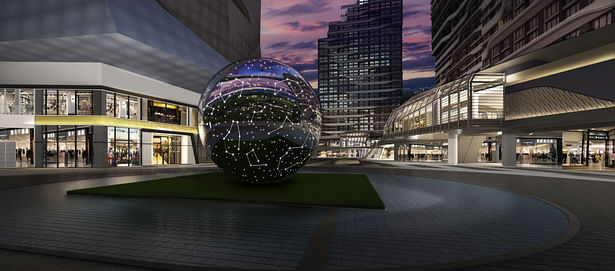
Hong Kong, HK | Shenzhen, CN | Shanghai, CN | Beijing, CN | Guangzhou, CN | Shenyang, CN | Chongqing, CN | Macau, CN | Singapore, SG | Dubai, UAE | Riyadh, SA | Manila, PH

“When it comes to architecture, branding comes before anything else is designed,” said Rowena Wong, LWK + PARTNERS Senior Associate and brand experience expert, “It defines the identity, core values, and positioning of a place, steering the direction of the whole architecture. It is much more than ‘perking up’ or designing cool signages.”
To really make the spatial experience a memorable, lasting and meaningful one, Rowena insists on setting up a brand message and narrative right from the start – a central theme that directs and permeates subsequent designs for both physical and virtual environments.
Every single element is interrelated and affects the visitor experience and their impression of their host. Pictured is a branding proposal for DEAR CITY, Dongguan, China
Brand experience designers are among the first people to be called into an architecture project. They work closely with clients, architects and spatial designers to ensure tangible space and intangible ethos are seamlessly bridged, and that key messages are effectively communicated to end-users.
Rowena describes ‘brand experience’ as an integrative process that brings together thinking, design and technology to create an immersive environment. From architecture, interior and lighting design to naming, signages and the staff name tags worn at the information desk, every single element is interrelated, and affects the visitor experience and their impression of their host.
“We provide a set of clear, agreed prerequisites that gives all working parties a better picture of what the client is looking for, which speeds up the whole workflow. It is also more likely that the final development or product is market-ready and user-facing, and promotes long-term engagement with their audiences,” said Rowena.
Branding proposal for a residential project in Hong Kong, China
Places of opportunities and engagement
Even today when remote work, digital marketing and e-commerce receive a lot of spotlight, most businesses tend to admit that having a physical location – a brick-and-mortar shop, a back office with meeting space, a showroom, a customer service hub – still matters.
Rowena believes that good branding matches businesses with the right people – employees, partners and customers – who are most likely to develop long-lasting, heartfelt connection with the brand: “The office, for example, can be one of the most telling testimonies of a company’s culture and what it stands for”, said Rowena.
The office of C-Bay Smart Cities Limited demonstrates its DNA of wisdom, partnership, strategic thinking and urban innovation
Last year, Rowena worked with the newly established C-Bay Smart Cities Limited to formulate its brand identity, positioning and strategy. The company is a joint venture of LWK + PARTNERS and Beijing General Municipal Engineering Design & Research Institute Co., Ltd., intended as a hub of next-generation urbanists and innovative technology.
After taking in expectations from C-Bay’s leaders, Rowena set off to outline a brand identity of wisdom, partnership, strategic thinking and urban innovation. She combined cosmic concepts and symbols from I Ching, an ancient Chinese classic that fundamentally forms the idea of the universe in Chinese culture, with binary computing language and geometry to tell a story of change and transformation. When applied to the office space and collaterals, an open, dynamic culture emerged, attracting likeminded people.
Branded collaterals of C-Bay Smart Cities Limited
Today, the office is more than just a place to work. It should provide a welcoming and tasteful space for staff, customers and partners to meet and interact, which creates opportunities, facilitates communication and effectuates deals: “It’s a multifunctional social space for everyone connecting with the company.”
The office can be one of the most telling testimonies of a company culture and what it stands for. Above shows the office of isBIM, a sister company of LWK + PARTNERS.
For anyone who is setting up a new space or building a new project, it is also commercially viable to line up with a branding specialist in the first place, to delineate an overall creative direction. With strategic branding, architecture can turn into an excellent brand ambassador that draws people, business and activity together – all in one place.
No Comments
Block this user
Are you sure you want to block this user and hide all related comments throughout the site?
Archinect
This is your first comment on Archinect. Your comment will be visible once approved.